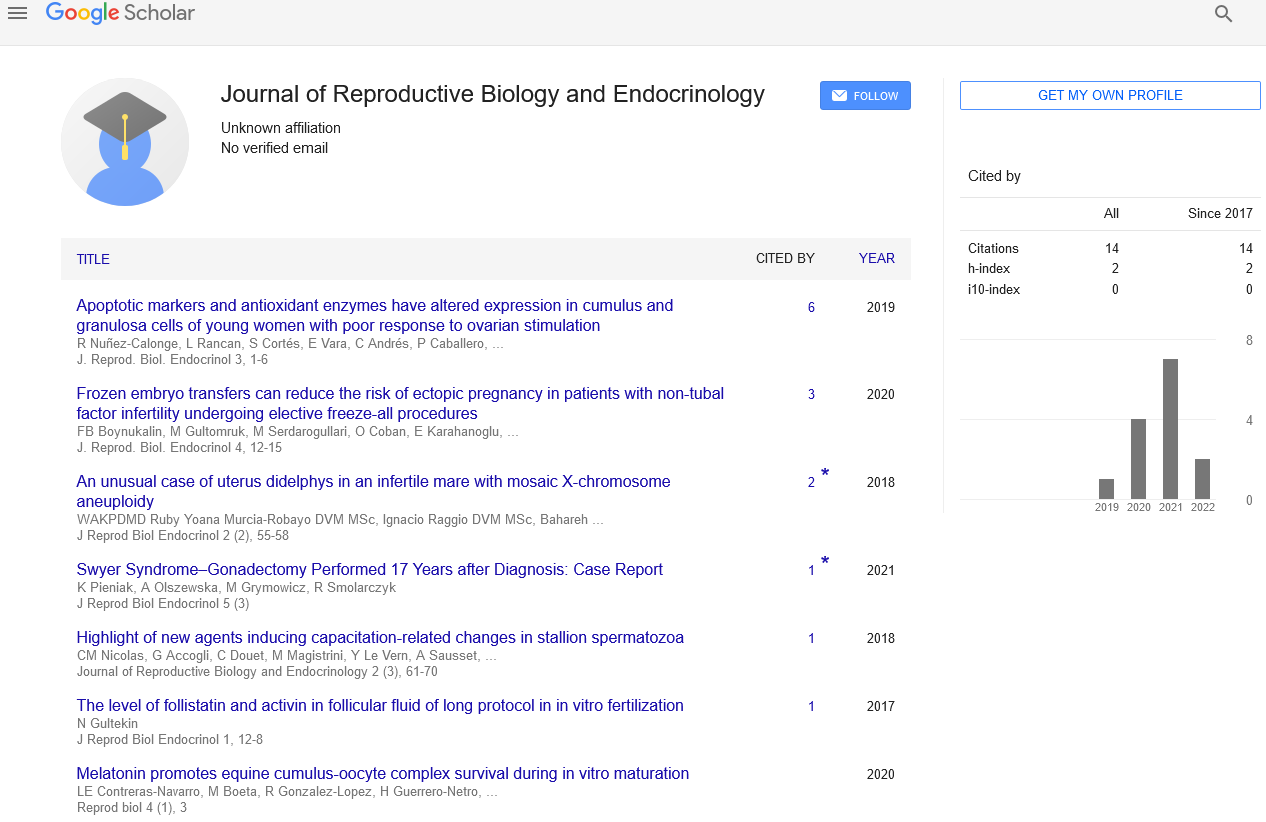Factors affecting Iranian women with HIV
Received: 02-May-2022, Manuscript No. PULJRBE-22-5155; Editor assigned: 04-May-2022, Pre QC No. PULJRBE-22-5155 (PQ); Accepted Date: May 24, 2022; Reviewed: 18-May-2022 QC No. PULJRBE-22-5155(Q); Revised: 20-May-2022, Manuscript No. PULJRBE-22-5155 (R); Published: 26-May-2022, DOI: 10.37532.2022.6.3.1-2
Citation: Raul S. Factors affecting iranian women with HIV. J Reprod Biol.Endocrinol 2022;6(3).1-2
This open-access article is distributed under the terms of the Creative Commons Attribution Non-Commercial License (CC BY-NC) (http://creativecommons.org/licenses/by-nc/4.0/), which permits reuse, distribution and reproduction of the article, provided that the original work is properly cited and the reuse is restricted to noncommercial purposes. For commercial reuse, contact reprints@pulsus.com
Introduction
Improved psychological well-being, healthy habits, and physical well-being are all correlated with knowledge of the reproductive health status of women living with HIV. Gaining knowledge on the reproductive health of women living with HIV and associated variables is the main goal of this research. An analytical crosssectional study was conducted on women with HIV (N = 112) who visited consultation facilities for high-risk behavior in Rasht and Tehran, Iran. Respondents were chosen at random from a sequential and accessible sample. The data collection included questionnaires with three sections: information on reproductive activities, sociodemographic and health factors, and a reproductive health assessment tool for women with HIV. The responsible conduct subdimension had the highest overall mean score (54.27 22.18). The corresponding mean scores for the sub-dimensions of dealing with the diagnosis, life instability, illness disclosure, disease-related worries, and support requirements for self-care were 50.14, 49.23, 44.27, 40.08, 38.25 and 33.25. The findings made it very evident that women living with HIV need to pay special attention to their reproductive health. To increase women's access to and use of reproductive health care, strategic planning, and context-specific interventions are required.
RH covers a broad spectrum of circumstances that occur during a person's life. Numerous variables, including societal influences, biological and genetic predispositions, as well as economic, cultural, and psychological determinants, have an impact on an individual's RH status. Disease, violence, and sexuality may all have an impact on and affect RH. One of the obstacles to development is poor RH, which has an impact on millions of people's health. Women are one of the populations most susceptible to the effects of low RH, and as a result, they are at risk for a variety of dangers, including STIs. It has been demonstrated that women cannot negotiate safer sex practices and are more likely than males to engage in unplanned and unprotected sex with several partners. The estimated 20.1 million adult people who are HIV positive are half of the prevalence of HIV/AIDS among girls and women. For a variety of reasons, women are particularly vulnerable to HIV. Given that there are 340 million new STD infections each year, STDs rank second among the causes of childbirth-related mortality in women. Reduced intimacy, worries about spreading the disease to partners decreased sexual function, sexual interest/arousal disorders, and changes in body image are all effects of HIV in women, especially young women.
HIV-positive women have particular requirements in RH, including family planning services and information as well as services and information safeguarding their health. AIDS is one of the greatest health issues facing WHL and has a detrimental effect on their RH. Due to the intimate connection between RH and HIV/AIDS, comprehensive RH treatment programs now include counseling, management, and prevention as key components. Women require knowledge of their rights because HIV typically has unpleasant side effects. To deal with the illness and its effects, WLH must possess the necessary knowledge and abilities. A sufficient understanding of the RH of WLH enables them to control themselves. In HIV-related diseases, self-management enables WLHs to take care of themselves and preserve their physical health. The needs and goals of WLH in terms of reproductive health have received significantly less attention to date. Although several earlier studies have evaluated the RH requirements of Iranian women, nothing is known about their current circumstances. In contrast, research on therapy and support services for RH of WLH is scarce. Knowing WLH's RH status enables RH counseling to be given to match their needs and improve RH. This paper's main goal is to shed light on the RH of WLH.
Conclusion
The results of this study emphasize how crucial it is to address the RH of WLH and its contributing variables. It enables the tailoring of reproductive health treatment and counseling to each woman's HIV status and supports women in making decisions about things like the quantity, spacing, and timing of pregnancies, as well as the use of contraceptives and infant-feeding practices. WLH ought should have access to the medical attention that best meets their unique requirements and circumstances. Additionally, WLH needs a robust central structure that provides adequate finances and resources for further developing RH-related issues. Future research should focus on patients' satisfaction with services given the significance of raising the standard of care provided by RH to HIV-positive individuals.





